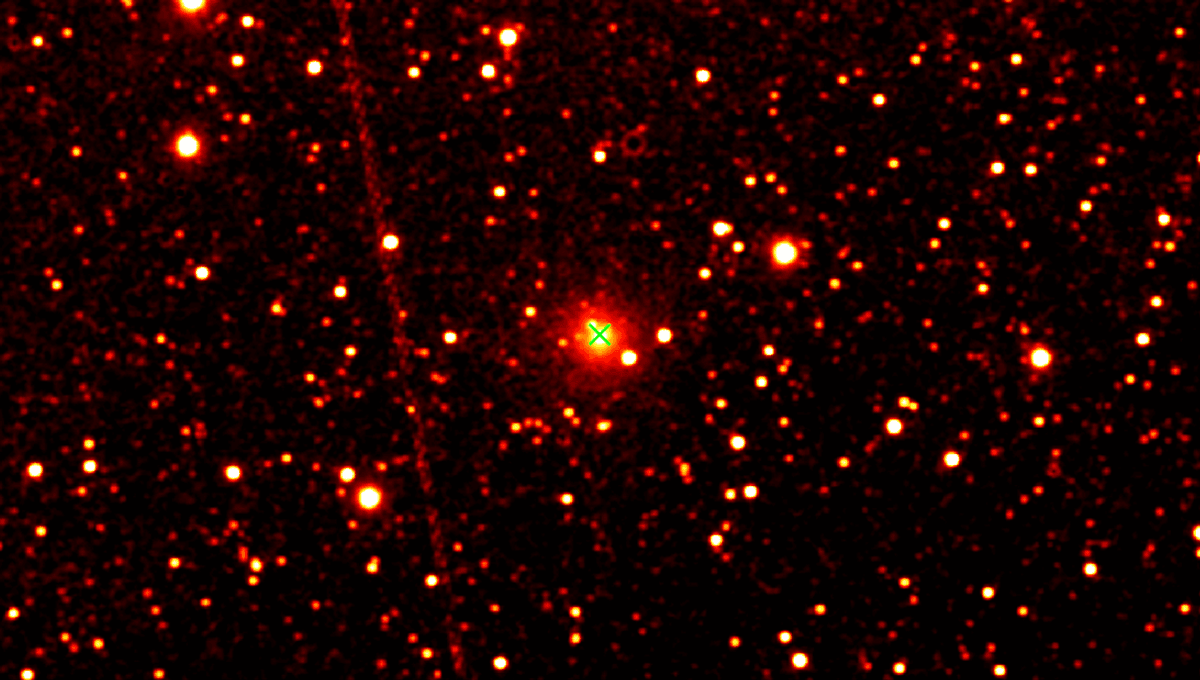-
Ροή Δημοσιεύσεων
- ΑΝΑΚΆΛΥΨΕ
-
Σελίδες
-
Blogs
-
Forum
First Radio Detection Received From Interstellar Object 3I/ATLAS. What Does That Mean?

First Radio Detection Received From Interstellar Object 3I/ATLAS. What Does That Mean?
Astronomers at the MeerKAT radio telescope in South Africa have reported the first radio detection from interstellar object 3I/ATLAS.
The rest of this article is behind a paywall. Please sign in or subscribe to access the full content. First a recap for anyone who isn't up to speed with our third interstellar visitor. On July 1, 2025, astronomers at the Asteroid Terrestrial-impact Last Alert System did their job beautifully, detecting an object whizzing through our galaxy on an escape trajectory. As other astronomers turned their telescopes towards it, it was soon confirmed to be an interstellar object, the third we have detected so far after 1I/'Oumuamua and 2I/Borisov. Since then, astronomers have been closely tracking the object, which was soon confirmed to be a comet due to its classic cometary behavior, including outgassing and a distinct coma. That's not to say it is uninteresting. We are talking about an interstellar comet that may have traveled alone for 10 billion years, a time capsule from another part of our galaxy, and another age of the universe. Studying 3I/ATLAS could tell us about another star system, and/or the journey it took to get here. For a short time, 3I/ATLAS fell out of the view of our telescopes, as it moved behind the Sun from our perspective. This was particularly frustrating as on October 29, it reached perihelion, its closest approach to our star. As comets approach the Sun, they are heated and the volatile ices on their surface vaporize, giving astronomers a chance to look at their composition. It would have been informative to see the comet on its closest approach, but now that the comet is back in view, astronomers are getting a good look at how its close encounter – possibly its first in billions of years – affected it. Unfortunately, a lot of focus on the object has been on the incredibly unlikely possibility that it could be an alien spacecraft (so far, we have not detected any signs of life in the universe other than here on Earth). While it is sometimes fun to speculate about the possibility of aliens, it is not a hypothesis that is necessary, with its behavior being far better explained by being a natural object, or specifically a comet. Now, astronomers using South Africa's MeerKAT radio telescope have reported the first radio detection from the comet, taken on October 24, 2025, when the comet was just 3.76 degrees from the Sun in the sky. The team had previously attempted to detect the comet on September 20 and September 28, with no luck. So what exactly does this mean? A layperson may see "radio detection" and assume "THE ALIENS ARE COMING, WE'RE GOING TO MEET MORK," but really, these latest observations, reported in an astronomer telegram, provide further evidence for the natural nature of interstellar comet 3I/ATLAS. Radio astronomy studies objects in the cosmos by detecting radio emissions, electromagnetic radiation with wavelengths longer than visible light. Matter can absorb electromagnetic waves at specific frequencies, and by pointing a radio telescope at a patch of the sky containing, say, an interstellar comet, astronomers can detect which wavelengths are absorbed, revealing the chemical composition of the object. In the case of 3I/ATLAS, observations from the MeerKAT radio telescope showed absorption from hydroxyl (OH) molecules, a nice, clear sign that the object is outgassing water ice as it is heated by our star. "The absorption features are consistent with the expected OH level population due to the heliocentric velocity of the comet," the team explains in their post. "The detection of OH on 24 October 2025 contrasts with the MeerKAT non-detection of these lines on 20 September 2025 from 14:36:54-15:39:25 UTC (rms noise of 3 mJy/beam) and 28 September 2025 from 10:00:26-16:55:53 UTC (rms noise of 1 mJy/beam)." That is behavior you would expect from a comet, which 3I/ATLAS most certainly is. "Given that 3I/ATLAS was separated from the Sun by 1.38 times the Earth-Sun separation, its surface temperature was smaller than that of Earth by roughly the square root of 1.38," Harvard astronomer Avi Loeb, who kickstarted the alien spaceship speculation, commented in a blog post. "This is because the solar heating rate scales inversely with separation squared, whereas surface cooling scales as temperature to the 4th power. The resulting thermal speed of the OH molecules shed from the surface of 3I/ATLAS at a temperature of ~230 degrees Kelvin, yields thermal broadening of the OH lines by a full-width at half maximum of ~0.8 kilometers per second — in agreement with the observed widths." Maybe now we can put the "alien mothership" speculation to bed, and appreciate the interstellar comet for what it is: an interstellar comet from a different part of the galaxy. But looking at my inbox, I wouldn't count on it.


